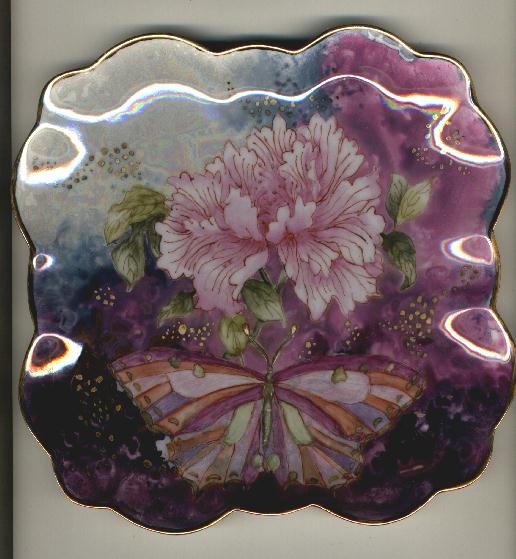
by Maureen D'Sousa
Background info.
When Marci asked me if I would send in some instructions with a piece of work I had done, I was a bit worried as I know that a lot of you have much more experience and expertise than I have. However, I do hope that someone will find the instructions useful, and perhaps the methods that I have learnt in Italy interesting.
The idea for this piece came from Peter Faust, who uses butterflies and other insects in many of his pieces. The Peony is a flower that I love, particularly when I use the oriental technique to paint flowers.
The plate, came from Portugal. I bought it while I was on holiday there a couple of years back.